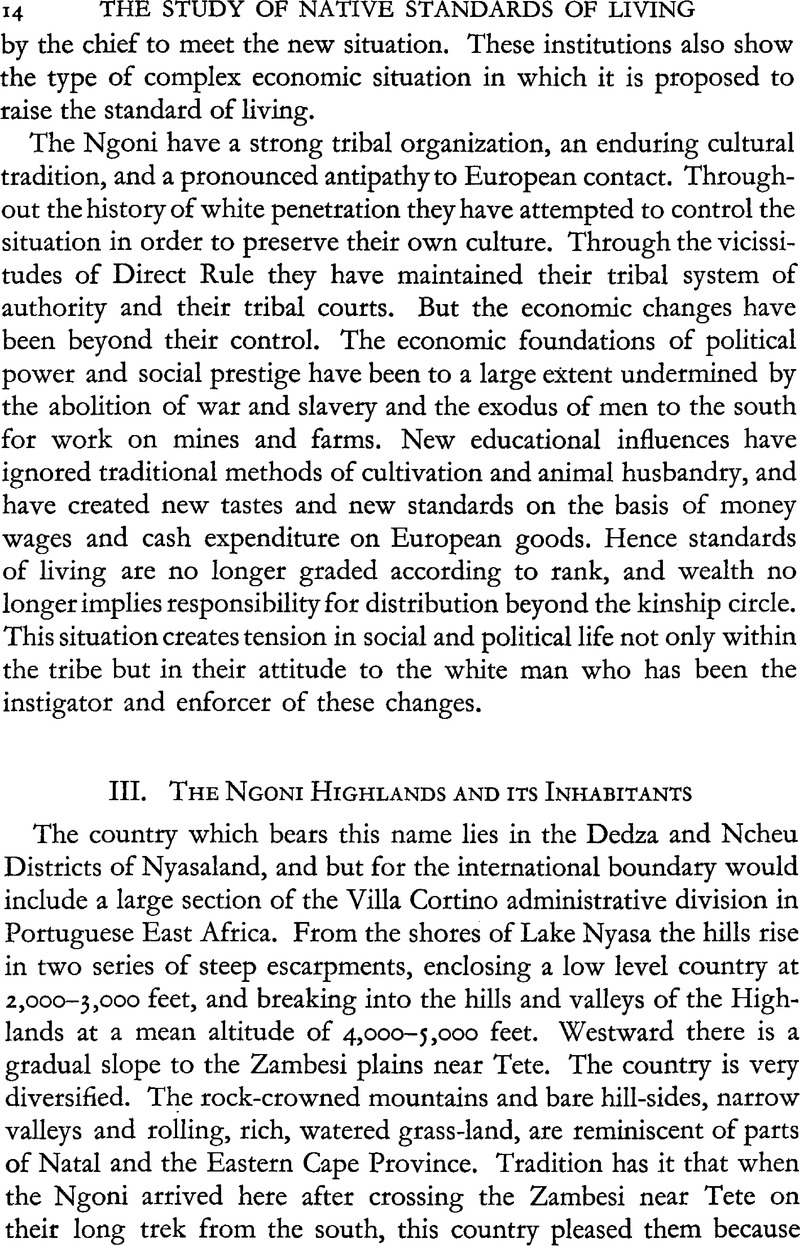No CrossRef data available.
Published online by Cambridge University Press: 21 August 2012

page 15 note 1 This mountain, since the international boundary was fixed, is now in Portuguese East Africa.
page 15 note 2 About 100 to the square mile.
page 15 note 3 See my article in Africa, vol. ix, no. 4, ‘Tradition and Prestige among the Ngoni.’
page 15 note 4 Many of these clans, Maseko, Magagula, Nqumayo, &c, are found to-day on the Zulu-Swazi-Suto borders.
page 16 note 1 I have seen some of the old sites and can verify what was told me by informants. They contained hundreds of huts whose polished floors can still be found under the grass.
page 16 note 2 See articles in Africa, vol. x, nos. i and 2, on the ‘Military Organization in Swaziland’ by Hilda Beemer.
page 16 note 3 The modern areas under Sub-Native Authorities do not correspond in all cases with the old alumuzana's districts. Hence tension arises in the exercise of authority.
page 16 note 4 The war between Chikusi and Chifisi was not a rebellion against the Ngoni but due to a dispute over the succession.